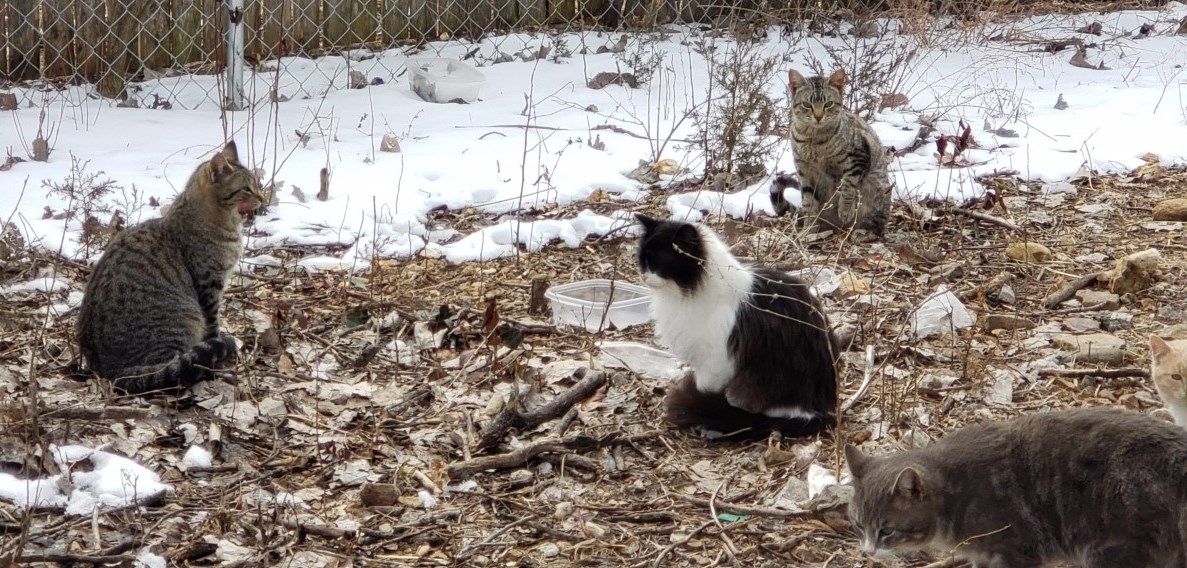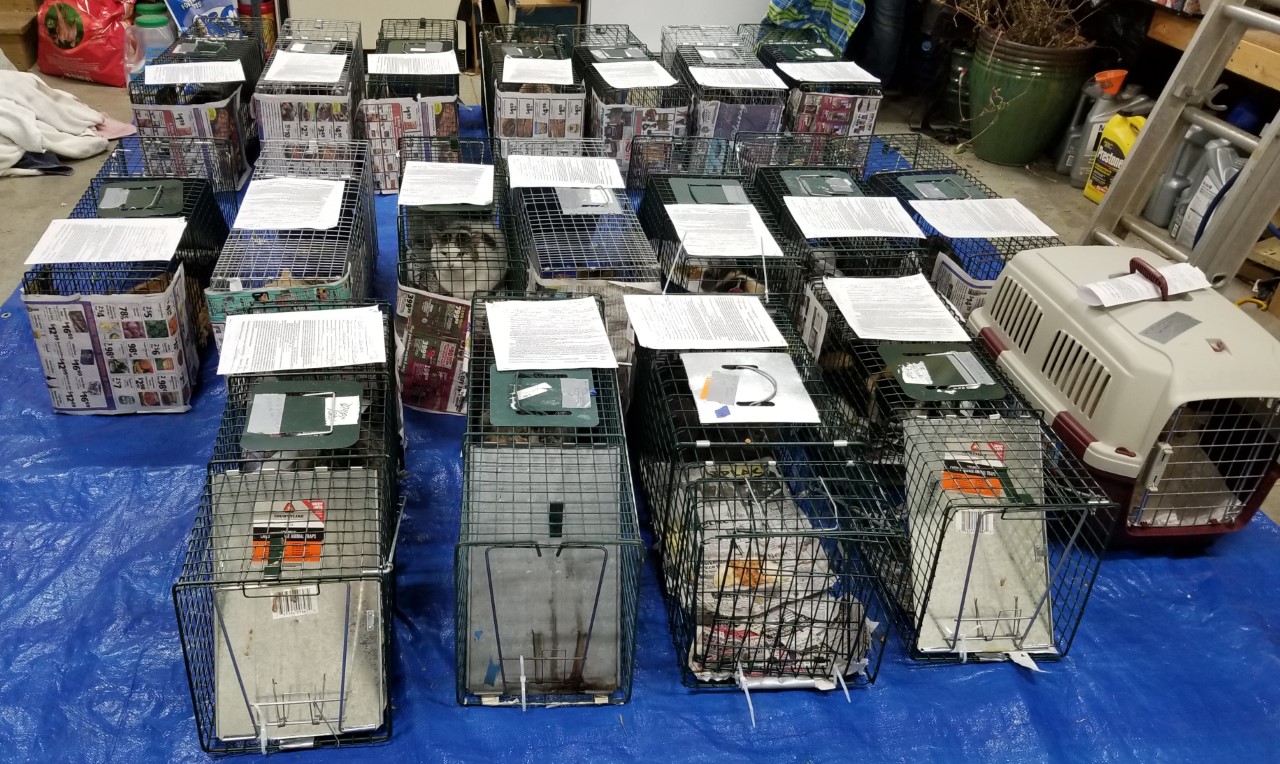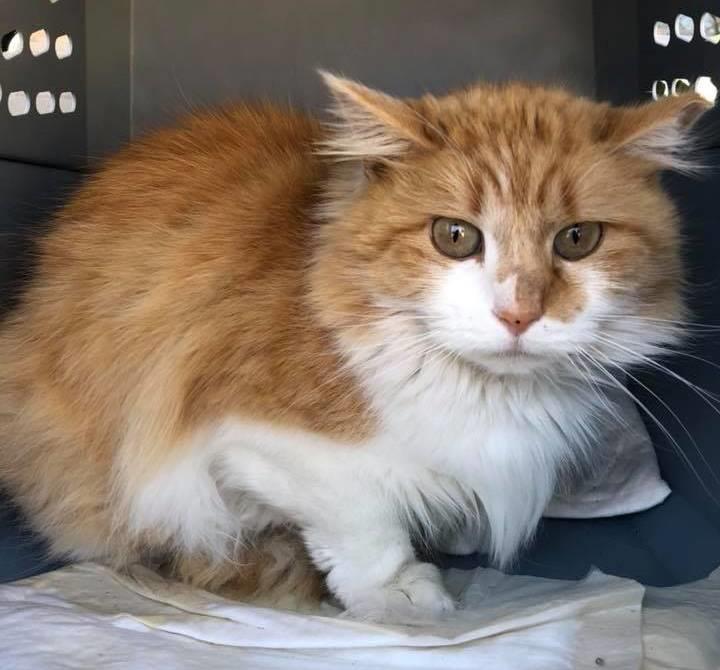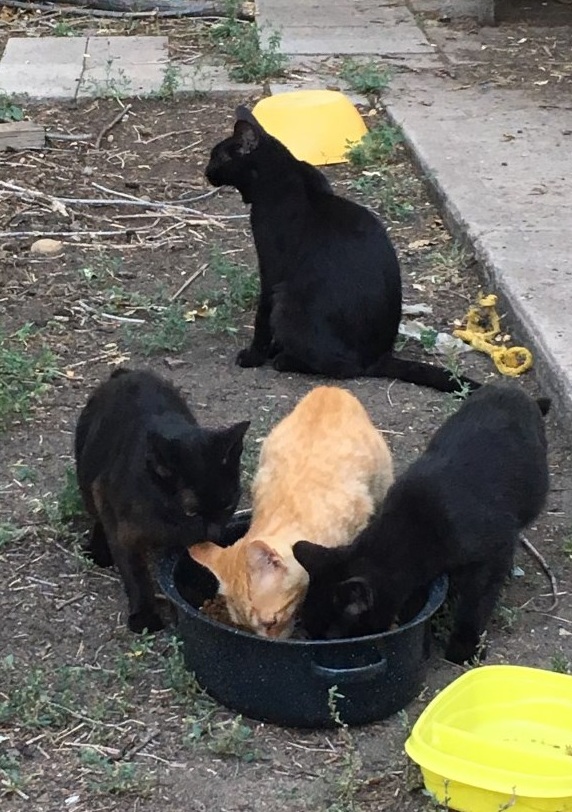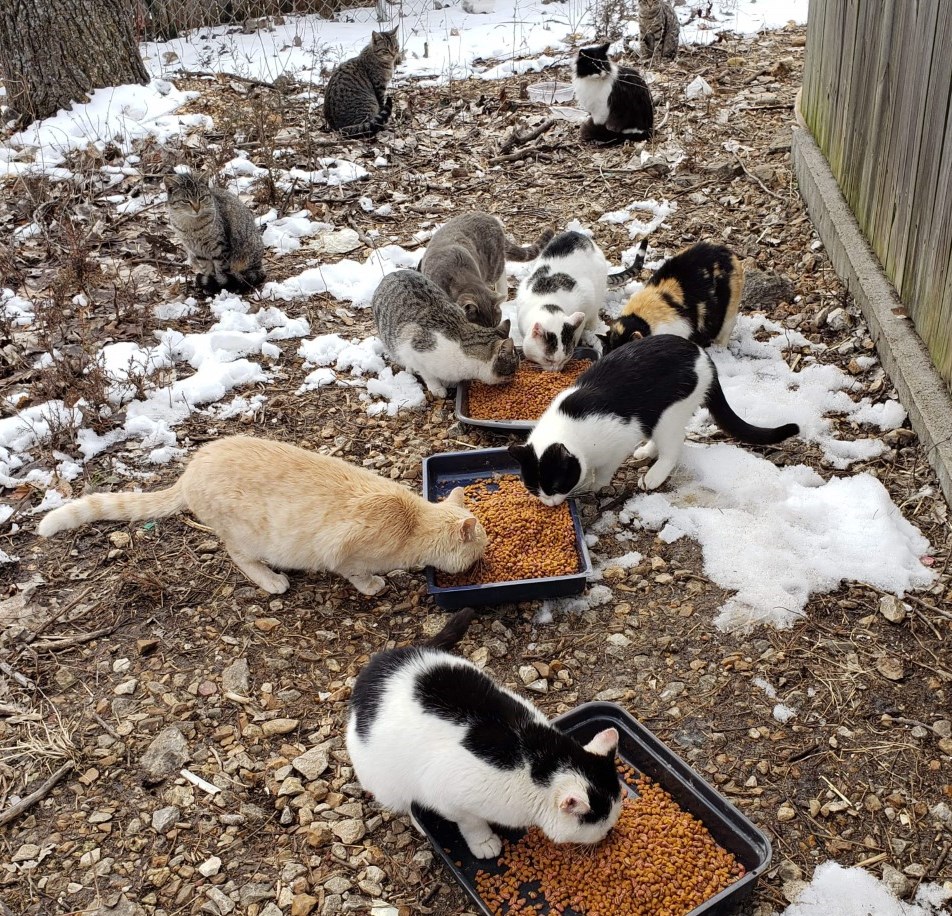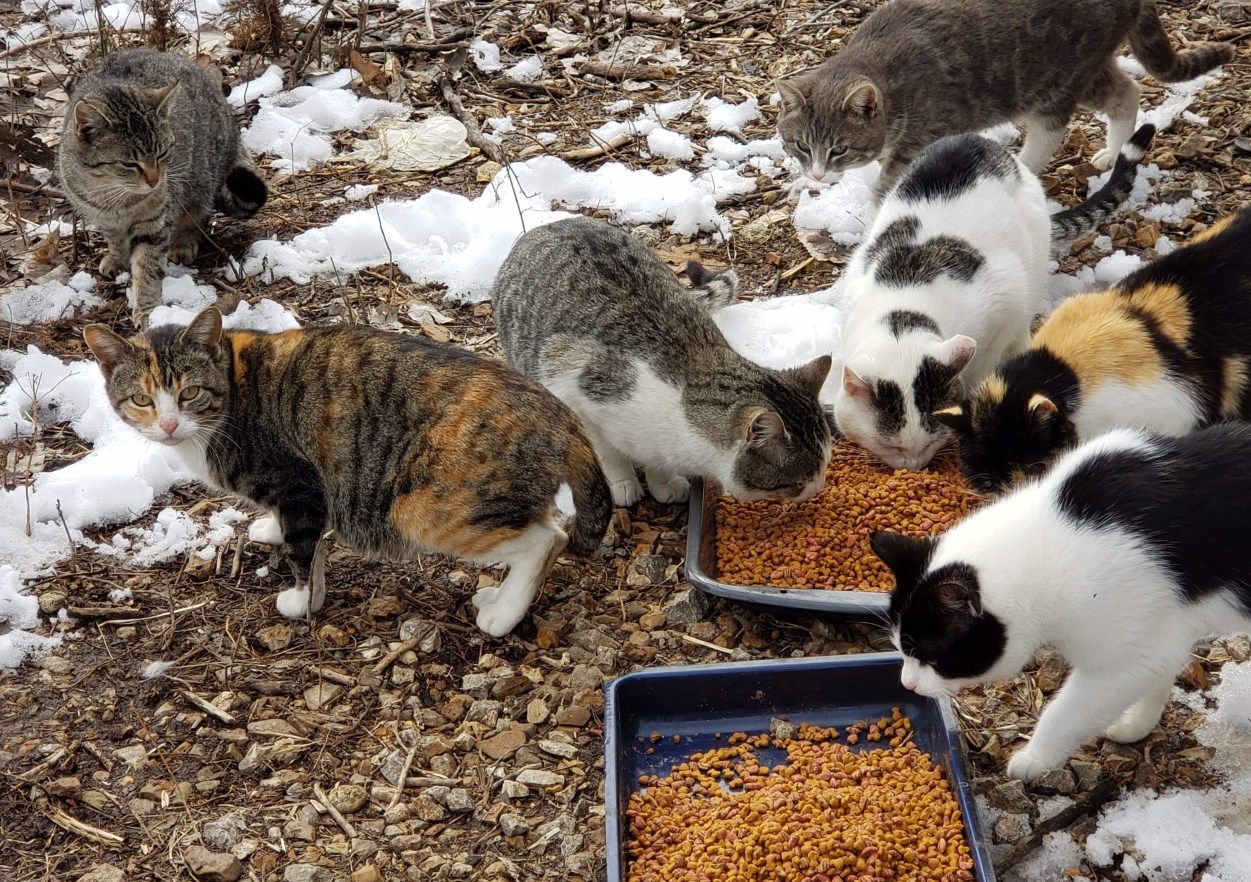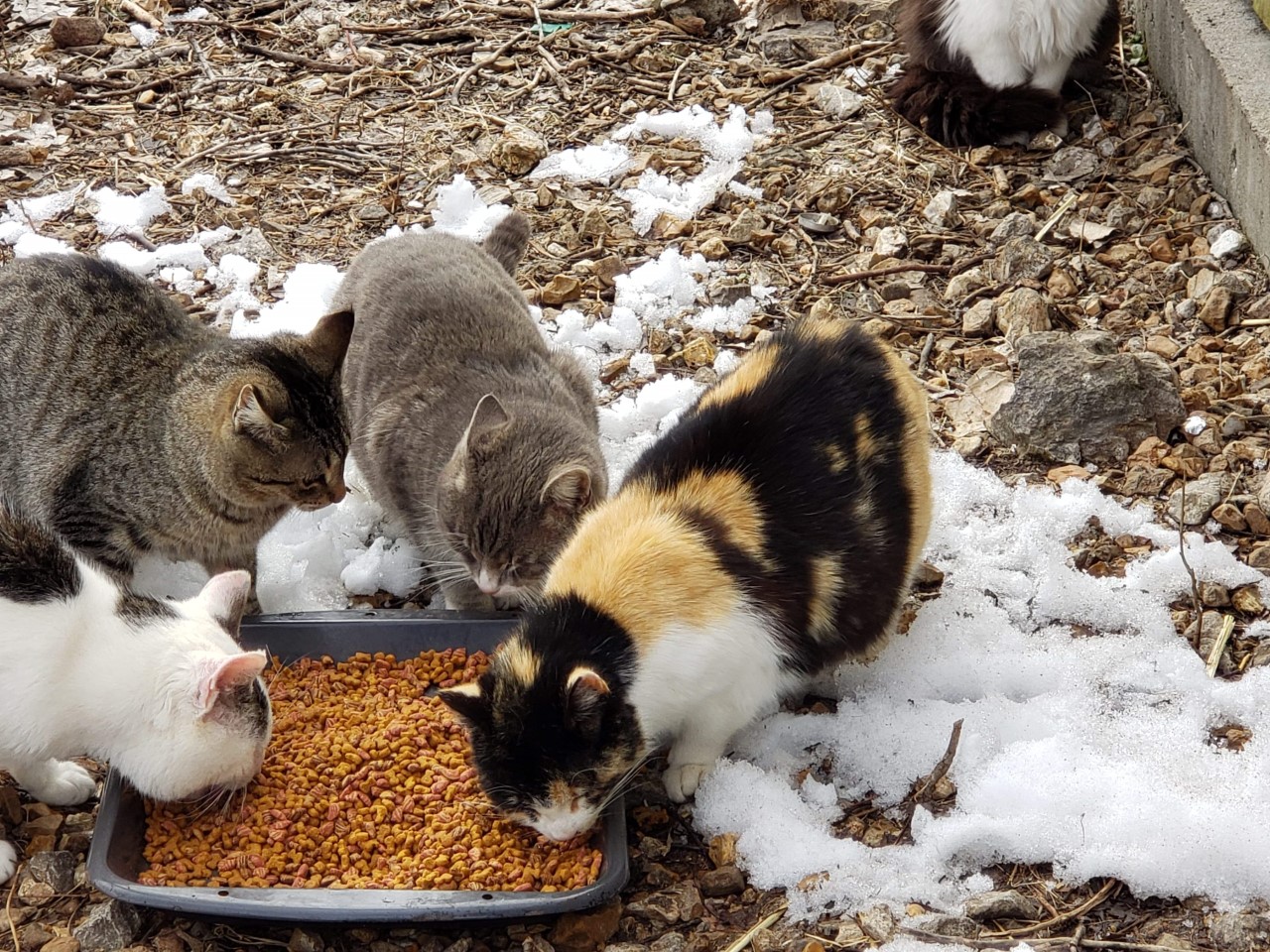Community Cats
Community cats are free-roaming, outdoor, unowned cats. These cats may be feral, abandoned or lost. Generally, they are not socialized—or friendly—towards people. Some are wild and have been born into their colony from a stray mom. Others have been lost or abandoned from a home and generally are a little tamer. These cats can live full, healthy lives with their cat families (also known as colonies) in their outdoor environment. Some of these colonies are fortunate enough to have a caregiver who regularly drops off food, clean water, and shelter supplies.
Trap-Neuter-Return is the only effective approach to controlling community cat populations. Left unaltered, these cats will continue to reproduce more homeless kittens. The process reduces new litters and stabilizes the size of the cat colony. Specifically, in a Trap-Neuter-Return (TNR) program, community cats are humanely trapped and brought to a veterinarian to be spayed/neutered, vaccinated, and ear-tipped (the universal sign that a cat has been part of a TNR program) and then returned to their outdoor environment. TNR helps community cats by relieving them of the stresses of mating and breeding, protecting them from diseases, lessening their interest in fighting and marking territories, and becoming quieter and better smelling to the neighborhood.
C.A.R.E. sponsors the work of several established TNR programs in Colorado, Oklahoma, Kansas, Missouri and Nebraska. These organizations strive to alleviate the suffering of feral cats by improving their lives with sterilization. Some programs try to identify the tamer cats during the TNR process and find them barn homes or families. It is usually easiest to transition a community cat when it is extremely young. C.A.R.E. often helps with the expense of traps and food for the caregivers.
C.A.R.E. is a big supporter of groups that do Targeted Trapping – which is an intensive TNR effort in a colony with a high cat population. The goal is to fix 100% of the cats so there is no reproduction. It is the most effective and efficient way to help the most cats with the shortest amount of time trapping and resources.


